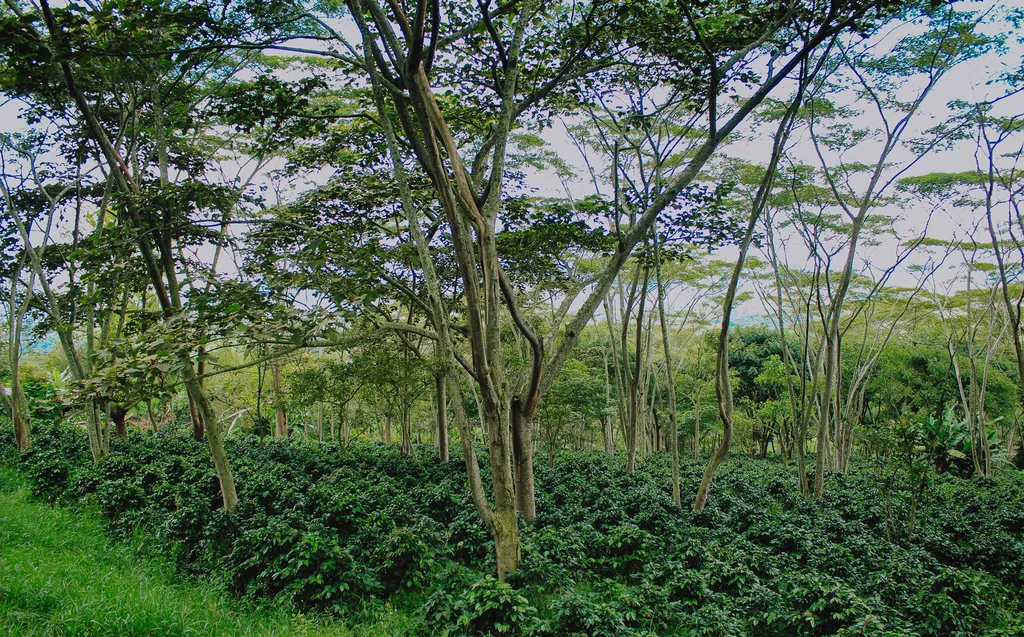In the heart of Colombia’s tropical dry regions, a groundbreaking study is reshaping how we understand and cultivate one of the world’s most sought-after aromatic crops: basil. Led by Jose Isidro Beltran-Medina, this research, published in the journal *Frontiers in Plant Science* (translated from *Frontiers in Soil Science*), delves into the intricate dance between basil crops, soil health, and the whims of tropical climates, offering a roadmap for sustainable and profitable agriculture.
Basil, a high-value crop with a global demand that’s only growing, is at the center of this agricultural puzzle. The study, conducted across three sites in the Tolima region—Mariquita, Honda, and El Espinal—aims to optimize basil yield by quantifying crop evapotranspiration (ETc) and characterizing soil variability. “Understanding these factors is critical for sustainable agriculture, especially under tropical conditions where climatic variability can significantly impact crop water requirements,” Beltran-Medina explains.
The research reveals that basil’s water needs fluctuate dramatically throughout its life cycle. Evapotranspiration, the process by which water is transferred from the soil to the atmosphere by evaporation and plant transpiration, peaked at 7.41 mm per day during the crop’s maturity stage. This dynamic behavior underscores the need for precision irrigation, a practice that could revolutionize water management in agriculture.
The study also highlights the profound impact of the El Niño-Southern Oscillation (ENSO) on rainfall patterns. The historical climate analysis revealed a bimodal rainfall distribution, with El Niño and La Niña phases significantly influencing water availability. “This variability poses challenges for farmers, but it also presents opportunities for adapting production systems to climatic shifts,” Beltran-Medina notes.
Soil health emerged as another critical factor in the study. Mariquita soils, for instance, boasted higher total porosity, organic matter, and field capacity, making them more conducive to water retention. In contrast, El Espinal soils exhibited higher bulk density and permanent wilting point, which can constrain water availability. Honda soils offered a balanced middle ground, with notable cation exchange capacity and moderate organic matter content.
The implications of this research extend far beyond the fields of Tolima. For the energy sector, which is increasingly investing in biofuels and other agricultural products, understanding these dynamics can inform strategic decisions. Precision agriculture, driven by data on soil health and water needs, can enhance yield stability and water productivity, making basil production more efficient and profitable.
Moreover, the study’s findings could pave the way for innovative soil management practices. Organic amendments, for example, could be tailored to address specific soil deficiencies, improving water retention and nutrient availability. This approach not only boosts crop yields but also promotes sustainable land use, a win-win for both farmers and the environment.
As the world grapples with climate change and resource scarcity, studies like Beltran-Medina’s offer a beacon of hope. By harnessing the power of data and technology, we can adapt our agricultural practices to meet the challenges of a changing world. “This research provides a baseline for adapting basil production systems to climatic variability,” Beltran-Medina concludes. “It’s a step towards ensuring food security and sustainable agriculture in tropical dry regions.”
In the ever-evolving landscape of agriculture, this study stands as a testament to the power of scientific inquiry. As we look to the future, the insights gleaned from this research could very well shape the next generation of farming practices, driving innovation and sustainability in the energy and agricultural sectors alike.

